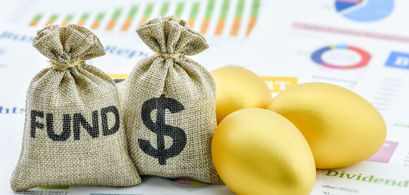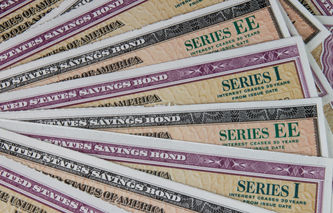The term bonds issued at a premium refers to newly issued debt that is sold at a price in excess of its par value. When a bond is issued at a premium, the company will typically choose to amortize the premium paid over the term of the bond using a straight-line method.
Workings of Bonds Issued at Premium
Bonds can sell at a discount or premium to par value due to administrative delays in getting the offering to market.
Issuing long-term bonds represents an important source of financing for many companies. When a corporation prepares to issue bonds to investors, they determine an acceptable coupon rate, which reflects both the prevailing rate of interest and the creditworthiness of the company.
The process of issuing bonds to the public takes a considerable amount of time. Approval is needed from the Securities and Exchange Commission, a prospectus must be written, and underwriting of the securities might be arranged.
This delay, along with changes in variables such as prevailing interest rates or the creditworthiness of the issuing company, can result in the bonds selling at a premium to their face value. As a general rule of thumb, the price of a bond will move inversely with interest rates.
If a bond is sold at a premium, the excess amount received is referred to as a premium on bonds payable. Companies will typically choose to use a straight-line method to amortize this premium over the term of the bond.
Example
Company A issued $1,000,000 in bonds with a coupon rate of 5% and a term of ten years. These bonds were well-received by the market, selling at 1.02, which is 102% of the par value.
The journal entry to record the issuing of the bonds at a premium would be:
| Debit | Credit | |
|---|---|---|
| Cash ($1,000,000 x 1.02) | $1,020,000 | |
| Bonds Payable | $1,000,000 | |
| Premium on Bonds Payable | $20,000 |
Using the straight-line method, Company A would amortize the premium over a period of ten years. The journal entry for this transaction is as follows:
| Debit | Credit | |
|---|---|---|
| Premium on Bonds Payable ($20,000 / 10 years) | $2,000 | |
| Interest Expense | $2,000 |
As noted in the above journal entry, the premium received on a bond effectively lowers the interest expense of the issuing company.
Pros and Cons of Premium Bonds
Pros
- Typically offered by companies with high credit ratings
- Predictable and stable cash flow
- Higher yield than what the market is currently offering
- Very likely to return the initial investment at maturity
Cons
- Risk of overpaying if the premium is overvalued or market rates increase
- High premiums can offset the yields
- Very small potential for price appreciation
- Plausible risk of opportunity costs
Premium Bonds Considerations
As a relatively low-risk investment that generates a stable income, premium bonds can be enticing to risk-averse and conservative investors. However, like any other investment, they aren’t entirely risk-free, and investors who consider buying premium bonds, need to carefully weigh out their options before making a decision.
Here are the most important factors investors might want to consider.
Market Interest Rates
Considering the prevalent market rates is crucial when purchasing premium bonds, as there is a strong correlation between the two. After all, premium bonds only become premium and get sold at a higher price, as a result of the difference between their coupon rate and the prevailing market interest rates.
Put simply, when the coupon rate of a bond is higher than the prevailing market rate, that bond becomes attractive to investors because it offers a higher yield compared to other available investment options. As a result, the bond can be sold at a higher price, making it a premium bond.
Conversely, when the coupon rate of a bond is lower than the prevailing market rate, the bond may be less attractive to investors. In this situation, the bond may be sold at a discounted price, below its face value. Bonds with lower coupon rates are less desirable because they offer lower fixed coupon payments compared to other bonds available in the market.
Let’s say an investor purchased their bond for $10,000 and got a 5% interest rate. The bond’s maturity date is in 10 years from the moment of purchase, and the investor is currently in the second year of ownership. In the meantime, the market rates have been decreasing, and the current prevalent market rate is much lower at 2%.
The investor’s bond offers much higher yields than the market is currently offering, so the bond is attractive to investors seeking better returns on their investments. This means that if the investor wants to, they can easily sell their bond on the secondary market at a premium price, like $11,000.
However, if we flip the scenario, and the investor holds a 2% interest bond, and the current market interest is 5%, the bond may be less attractive to investors and might have to be sold at a discount price.
This is why considering the current market rates and how they may behave in the future is so essential when thinking about buying premium bonds. Investors who believe that the market rates will continue declining may find buying a premium bond advantageous in securing a higher yield compared to other available investment options.
Note that the situation in the above example is hypothetical, and the dynamics of the bond market are more complex than this and can vary based on multiple factors. This is a simple illustration to explain the correlation between prevalent market rates and premium bond prices.
Credit Ratings
Considering the credit ratings of the issuing company is crucial when purchasing any bond, including premium bonds. These ratings provide an assessment of the issuer's ability to meet their financial obligations and repay bondholders, allowing investors to evaluate the level of risk associated with investing in said bonds.
However, credit ratings can also affect the prices and coupon rates of bonds.
When a company's credit rating is high, indicating a lower risk of default, investors are generally more willing to purchase the company's bonds. As a result, the demand for these bonds increases, driving up their prices. In turn, the higher price reduces the coupon rate or the effective yield of the bond.
On the other hand, if a company's credit rating is downgraded, indicating a higher risk of default, investors may become less willing to invest in its bonds. The decreased demand can lead to lower bond prices and, consequently, higher coupon rates or effective yields to attract investors.
For premium bonds, which are initially sold at a price higher than their face value, credit ratings play a crucial role.
A higher credit rating enhances the market's perception of the issuer's financial strength and ability to fulfil its obligations. This positive perception can contribute to maintaining or even increasing the bond's premium status in the secondary market.
Conversely, a downgrade in credit rating can negatively impact the price and coupon rate of a premium bond. Investors may require a higher yield to compensate for the increased risk, leading to a potential decrease in the bond's price and a higher effective yield.
Therefore, when purchasing premium bonds, it’s essential to consider the credit ratings of the issuing company and how they might affect the bond's prices and coupon rates.
Effective Yields
Just because a premium bond offers a coupon rate higher than the prevailing market rate, it doesn't mean that buying it is always the best course of action. Investors also need to consider the bond's effective yield, which takes the purchase price and any premiums or discounts into account.
The effective yield represents the actual return an investor can expect to earn on their investment, considering both the coupon payments and the price paid for the bond.
If a premium bond is purchased at a price significantly higher than its face value, the effective yield may be lower than the coupon rate. Higher purchase prices reduce the overall return on investments, so investors assess the effective yield to determine whether the premium bond aligns with their investment goals and risk tolerance.
However, while the effective yield provides a more accurate measure of the bond's potential returns, it’s not perfect. It assumes that the investor will reinvest all the coupon payments in another investment security with the same rates the premium bond provides, which may not always be possible.
Market conditions and interest rates can change over time, and it can be challenging to consistently find investments with identical or comparable rates to reinvest coupon payments. This means that the actual reinvestment opportunities may differ from the assumptions made in calculating the effective yield.
Overall, in addition to calculating the effective yields to accurately assess whether the additional yield justifies the paid premium, investors must understand why the bond they are interested in purchasing is being traded at a premium.
If the premium is high due to prevailing low market interest rates, it may indicate an attractive opportunity for investors seeking higher returns. In such cases, the added yield compared to the overall market could potentially compensate for the premium paid.
On the other hand, if market interest rates rise significantly after the bond purchase, the bond's market value may decline, and investors could be at risk of overpaying for the added premium.
Premium vs Discount Bonds
In contrast to premium bonds, which are being sold at a higher price and offer higher than the prevailing market rates, discount bonds are sold at a price below their face value. Their coupon rates are lower than the prevailing market rate, though there are still ways investors can benefit from holding discount bonds.
When investors purchase discount bonds at a price below face value, they have the opportunity to earn a higher effective yield compared to the bond's lower coupon rate. This is because the investor's initial investment is lower, but they still receive the bond's full face value at maturity.
This stands in opposition to premium bonds, where investors pay a higher price to purchase the bond, resulting in a lower effective yield. With discount bonds, the lower purchase price allows investors to potentially achieve a higher effective yield than the bond's coupon rate.
That being said, premium and discount bonds do share some similarities, like their mutual benefit from the decrease of prevailing market rates.
For premium bonds, the higher coupon rate becomes more attractive relative to the lower prevailing market rates, making them potentially more valuable. On the other hand, discount bonds benefit from the decrease in market rates because their fixed coupon payments become relatively more appealing.
In summary, while premium and discount bonds have opposing characteristics regarding their initial purchase prices and coupon rates, they both respond to changes in market rates. Understanding these dynamics can help investors make informed decisions about whether to invest in premium or discount bonds.






